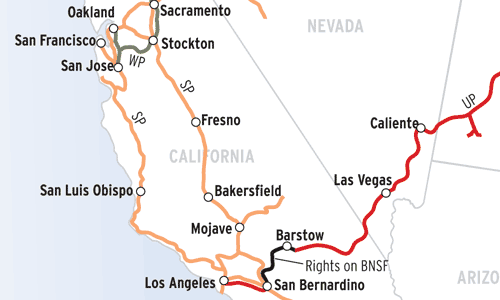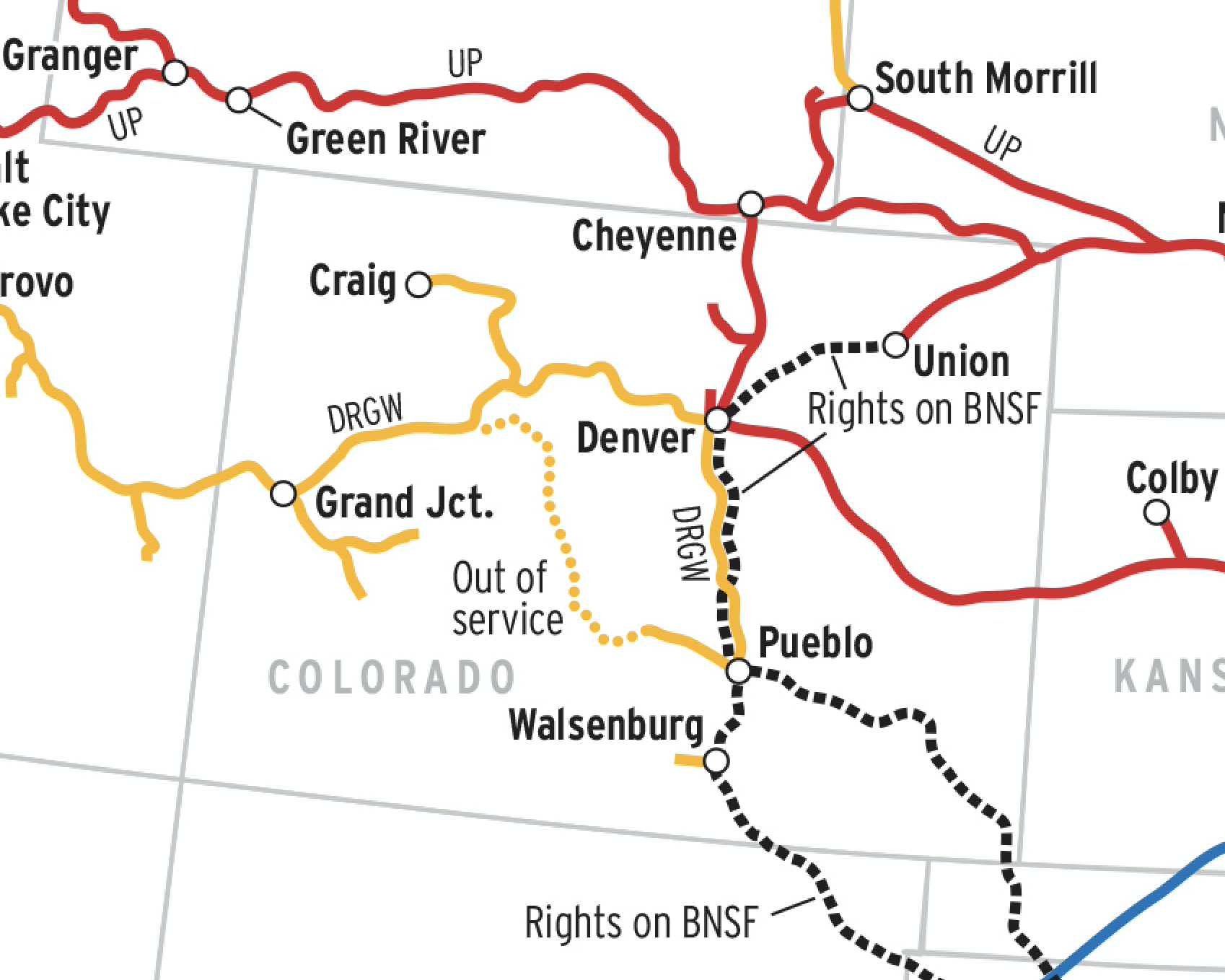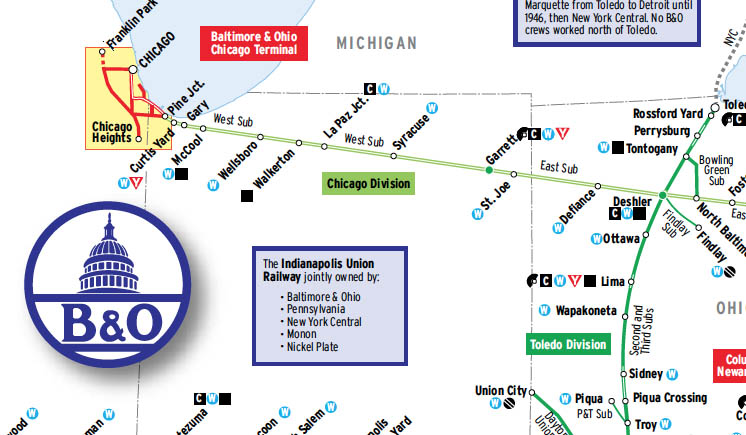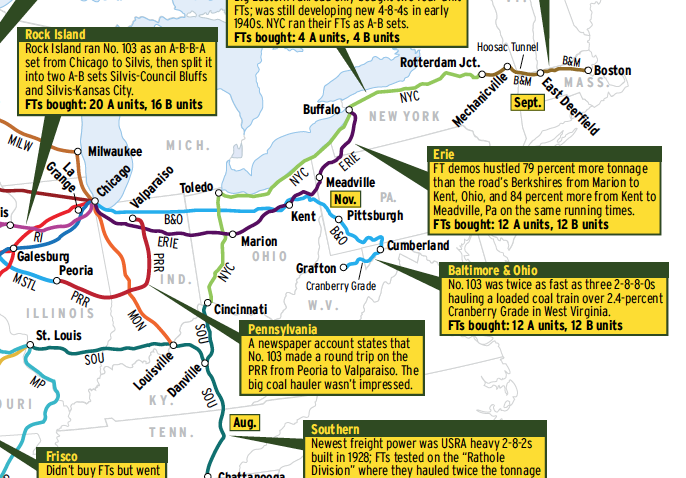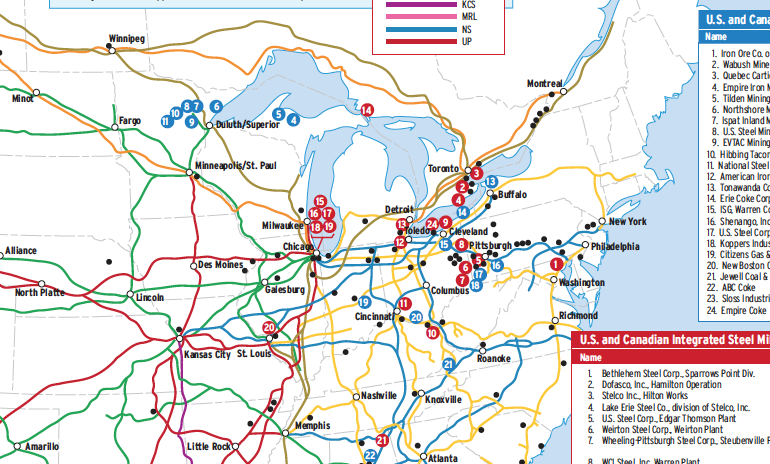This Map of the Month appeared in the October 2004 issue of Trains magazine.
It’s fitting that the largest U.S. railroad today, the Union Pacific, was born as part of a grandiose plan — to build the nation’s first transcontinental railroad. From that not-so-humble beginning, UP has grown into the massive 32,800-mile system shown here. (Many long routes where UP runs on trackage rights of others are not depicted; lines UP uses to reach terminals it owns, e.g., Seattle, Wash., are shown.)
Chartered by Congress in 1862 as the eastern part of the transcontinental that would unite the East with California, UP began building west from OMaha in 1865. ON may 10, 1869, it met Central Pacific at Promontory, Utah. CP west of Ogden would become part of Southern Pacific. (The map shows UP predecessors as they were in immediate post-World War II Years.)
Edward H. Harriman bought UP in 1897 and eventually amassed a network that included SP, Illinois Central, and Chicago & Alton. He double-tracked UP from Omaha to Granger, WYo., and built an alternate line over Sherman Hill west of Cheyenne, Wyo., but he soon would have to divest of his empire.
By 1910, UP had grown to the basic configuration it would keep through the 1970s: The main from Council Bluffs, Iowa (next to Omaha), to Ogden; subsidiaries Los Angeles & Salt Lake to southern California and Oregon Short Line to the Pacific Northwest; and the former Kansas Pacific and Denver Pacific from Kansas City to Cheyenne.
Merger milestones marked UP’s subsequent growth. UP tried to acquire the Rock Island in 1963, but after 12 years of procedural wrangling, the parties gave up. In 1980, rival Burlington NOrthern acquired the Frisco, and the post-regulation merger game was on. In 1982 UP added Missouri Pacific and Western Pacific, which doubled its size, advanced it to northern California and Chicago, and gave it access to lucrative Gulf Coast oil and petrochemical industries. UP finally took over coal partner and favored Chicago connection Northern Western in 1995, but BN bought Santa Fe, forcing UP to, in effect, retrace Harriman’s steps, taking an ailing Southern Pacific, which by then included Rio Grande and the old Alton.
It’s a different world, but UP still has “the franchise,” shield emblem, yellow diesels, and all.
Railroads included in this map:
Chicago & Eastern Illinois; Chicago & North Western; Chicago Great Western; Chicago, Milwaukee, St. Paul & Pacific; Chicago, Rock Island & Pacific; Denver & Rio Grande Western; Gulf, Mobile & Ohio; Minneapolis & St. Louis; Missouri-Kansas-Texas; Missouri Pacific; New York Central; Southern Pacific; Spokane International; St. Louis Southwestern; Texas & Pacific; Union Pacific; Western Pacific





